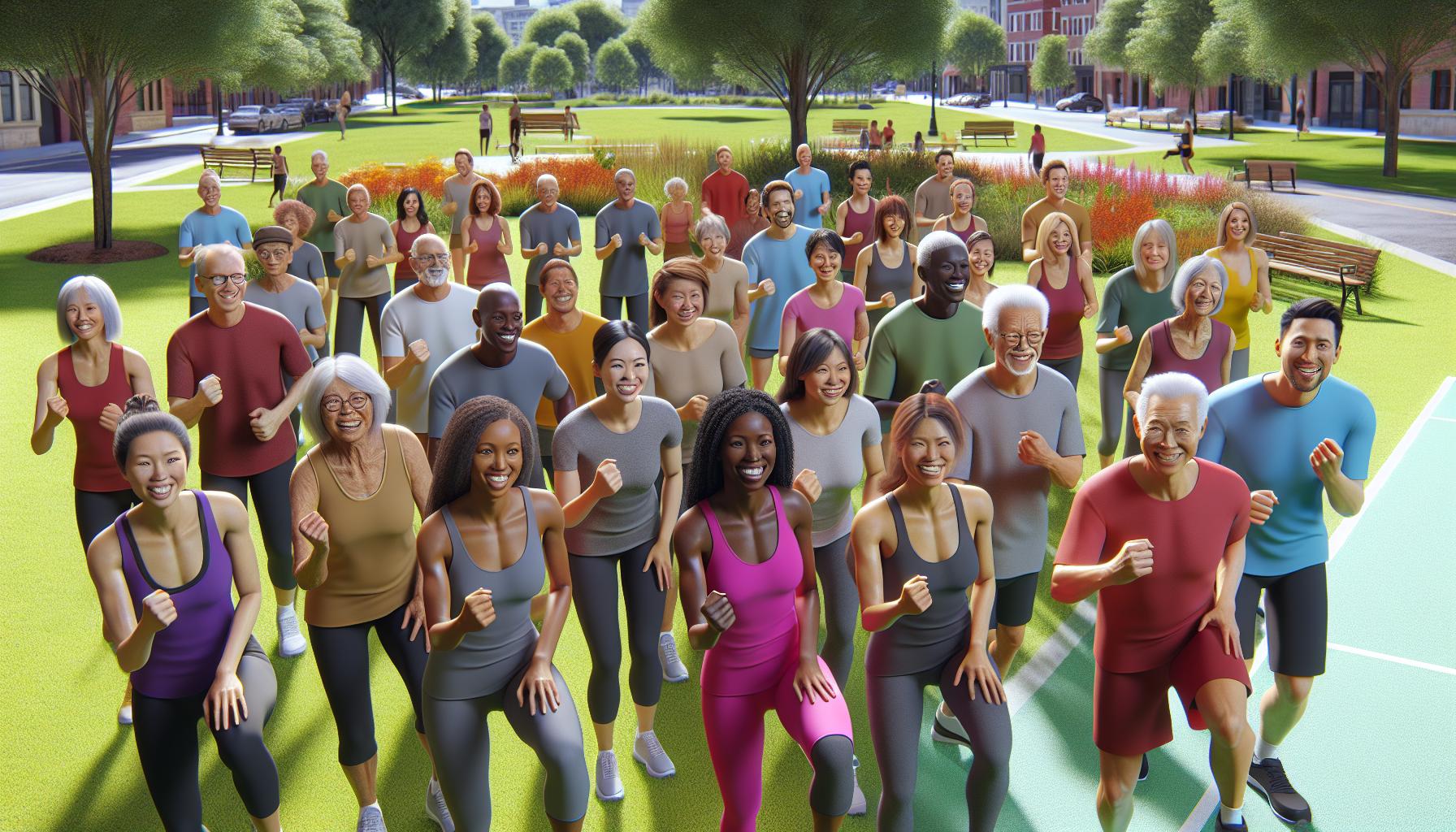Phone:
(701)814-6992
Physical address:
6296 Donnelly Plaza
Ratkeville, Bahamas.

In a world where couch surfing is an Olympic sport and snacks are considered a food group, physical health services are the unsung heroes of well-being. They swoop in like caped crusaders, ready to rescue individuals from the clutches of sedentary lifestyles and questionable dietary choices. Whether it’s a routine check-up or a specialized treatment, these services offer the support needed to keep bodies moving and grooving.
Imagine a life where aches and pains are just distant memories, and energy levels soar higher than your favorite sitcom’s ratings. That’s the promise of physical health services. They’re not just about avoiding the doctor’s office; they’re about embracing a vibrant, active life. So why not take the plunge? Investing in physical health services might just be the best decision since deciding to binge-watch that series everyone’s been raving about.
Physical health services encompass a wide range of activities aimed at enhancing overall well-being. These services include preventive, curative, and rehabilitative care tailored to meet individual needs. A significant component involves regular check-ups designed to monitor health status and address potential issues early.
Many individuals benefit from services like physical therapy, which aids recovery from injuries through specialized treatment plans. Fitness assessments also play a vital role, offering insights into physical capabilities and identifying areas for improvement. Moreover, programs focusing on nutrition provide essential guidance for maintaining a balanced diet.
Health education workshops serve a dual purpose. First, they increase awareness about the importance of physical activity. Second, they supply strategies for integrating exercise into daily routines. Services such as group fitness classes foster community engagement while promoting active lifestyles.
Mental well-being finds support through physical health initiatives as well. Engaging in regular exercise has proven effects on mood enhancement and stress reduction. Many facilities combine physical health services with mental health support, recognizing the interconnectedness of the two.
Access to these services significantly contributes to a healthier population. Countries with robust physical health services generally exhibit lower rates of chronic diseases. Public health campaigns often emphasize the importance of utilizing these resources effectively.
Individuals who prioritize their physical health often enjoy enhanced quality of life. When people engage with physical health services, they can improve their overall energy levels and manage daily stressors more effectively. Investing in these services proves crucial for building a sustainable, active lifestyle.

Physical health services encompass various types that cater to different needs. These services include preventive, therapeutic, and rehabilitative care options designed to support individual health journeys.
Preventive services focus on avoiding health problems before they arise. Regular check-ups play an essential role, allowing healthcare providers to identify potential risks early. Immunizations also protect against various diseases, ensuring long-term health. Screening tests such as mammograms or cholesterol checks help detect issues promptly. Educating individuals about healthy lifestyle choices empowers them to make informed decisions that reduce risks. Health education workshops contribute significantly by teaching participants the importance of physical activity and nutritional balance.
Therapeutic services provide treatments for existing health issues. Physical therapy is a prominent feature, often addressing mobility challenges and aiding recovery from injuries. Using modalities like massage and ultrasound, therapists help alleviate pain and restore function. Nutrition counseling also forms a critical aspect, guiding individuals in creating personalized meal plans. Many individuals benefit from mental health aspects of therapy, which support emotional well-being alongside physical recovery. Complementary practices, such as acupuncture and chiropractic care, offer additional avenues for enhancing overall health.
Rehabilitative services aim to restore function and improve quality of life after injury or illness. Occupational therapy facilitates daily living activities, empowering individuals to regain independence. Speech therapy assists those with communication challenges, promoting better interaction with others. Structured exercise programs often form a core part of rehabilitation, gradually increasing strength and mobility post-injury. Providers work closely with clients to establish personalized care plans focused on achievable goals. Successful rehabilitation contributes significantly to returning individuals to their daily routines and activities.

Access to physical health services plays a crucial role in overall well-being. Availability of these services significantly impacts individual and community health.
Community health greatly improves as access to physical health services increases. Regular check-ups and health education workshops empower individuals to make informed choices, leading to healthier lifestyles. Studies show that communities with robust physical health services experience lower rates of chronic diseases. Increased physical activity enhances collective well-being, builds connections, and fosters community engagement. Group fitness classes promote social interaction, creating a supportive environment for individuals. Healthier communities experience fewer healthcare-related costs, improving overall economic stability. Accessibility to these services aligns with broader public health goals.
Economic advantages arise from prioritizing access to physical health services. Healthier individuals contribute more effectively to the workforce, increasing productivity and reducing absenteeism. Preventive services lead to lower healthcare costs over time by decreasing the incidence of chronic diseases. Research indicates that for every dollar spent on preventive health measures, communities save approximately $3 in healthcare costs. Investments in physical health services yield a healthier population, which in turn supports economic growth. Furthermore, reduced healthcare expenditures allow for reallocation of funds to other critical community needs. Access to these services creates a win-win scenario for individuals and the economy.

Physical health services face several significant challenges that impact their effectiveness in promoting well-being. Resource limitations hinder the ability of services to reach those in need and maintain high-quality care.
Resource limitations significantly affect the availability of physical health services. Funding for programs often falls short, which leads to reduced staffing, limited facilities, and inadequate equipment. Health programs struggle to deliver essential services due to these constraints. Many communities experience shortages in specialized personnel, like physical therapists and nutritionists, creating gaps in care. Insufficient resources also hinder the implementation of preventive health initiatives that drive community engagement. Authorities must prioritize investment in these services to alleviate the burden presented by resource limitations.
Accessibility issues present another critical challenge in providing physical health services. Individuals in rural areas often face long distances to reach care facilities, making regular check-ups difficult. Transportation barriers further complicate access for low-income populations. Language and cultural differences can create misunderstandings between providers and patients, limiting effectiveness. Affordability also plays a crucial role, as high out-of-pocket costs deter many from seeking necessary healthcare. Addressing these accessibility issues could significantly enhance community health outcomes and ensure that all individuals receive crucial physical health services.
Telehealth services are on the rise, allowing individuals to access care from the comfort of home. Virtual consultations with healthcare providers enhance accessibility, especially in rural areas. Innovations in wearable technology keep track of physical activity, heart rates, and overall health metrics, promoting active lifestyles among users.
Preventive care models gain traction, focusing on early intervention to reduce chronic disease rates. Studies show that proactive engagement in health management leads to improved outcomes and reduced healthcare costs. Community health initiatives collaborate with various stakeholders to forge partnerships, expanding the reach of physical health services.
Personalized fitness programs utilize data analytics to tailor solutions to individual needs. These custom approaches increase motivation and adherence to health regimens. Group fitness classes leverage social interaction, leading to higher retention rates and a more supportive environment.
Rehabilitative services continue to evolve with advanced therapy technologies. Tools like virtual reality are integrated into rehabilitation protocols, enhancing recovery experiences. Educational workshops empower individuals by providing practical tips for integrating physical activity into daily life.
Policy changes are anticipated to improve access to physical health services, addressing funding and resource allocation challenges. Increasing emphasis on mental health integration within physical health services highlights the connection between body and mind.
Investing in training for healthcare providers ensures effective delivery of care. Financial incentives drive organizations to prioritize comprehensive health solutions, contributing to healthier populations. Collaboration among various sectors promises innovative solutions to existing challenges in delivering physical health services.
Investing in physical health services is a vital step toward achieving a healthier and more vibrant life. These services not only enhance individual well-being but also contribute to the overall health of communities. By prioritizing access to preventive, therapeutic, and rehabilitative care, individuals can significantly improve their quality of life.
The ongoing challenges in delivering these services highlight the need for continued investment and innovation. Embracing new technologies and fostering collaboration among healthcare providers can pave the way for more effective solutions. Ultimately, a commitment to physical health services is an investment in a brighter, healthier future for everyone.